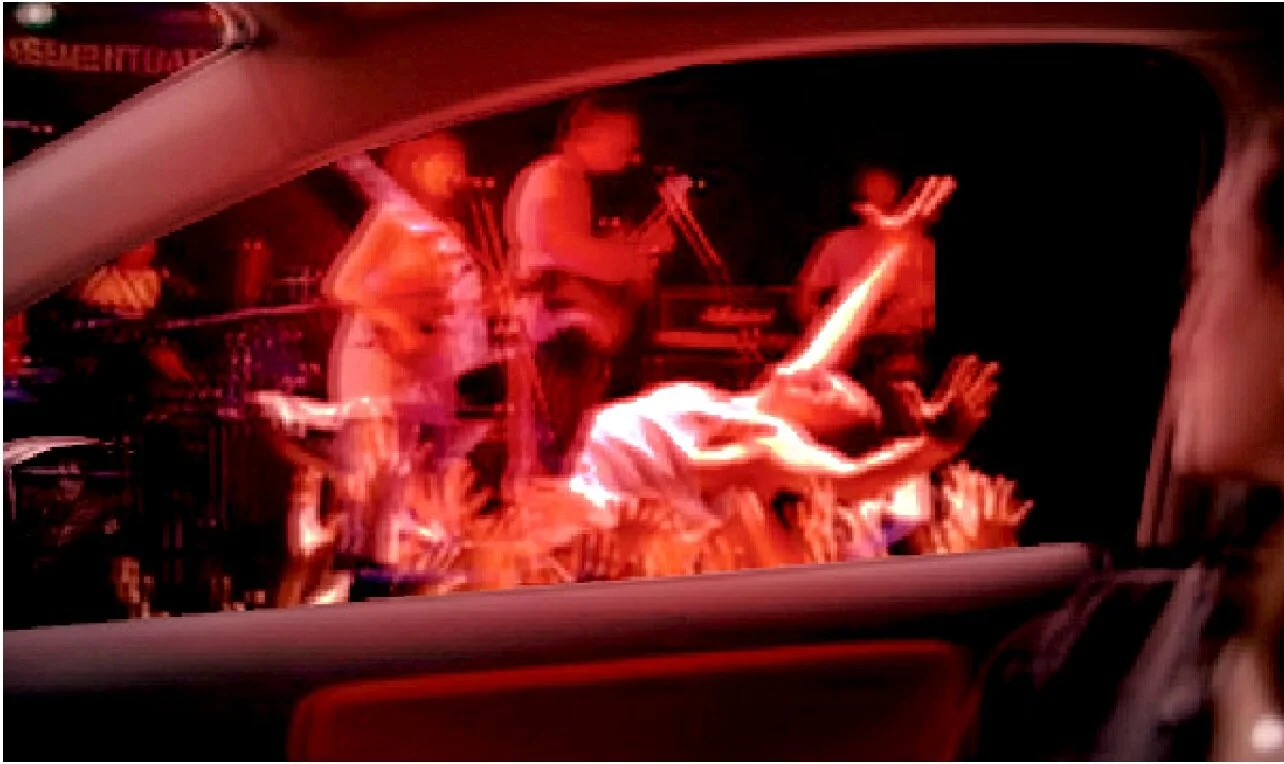Architecture

Garden House
The site is Ryoanji Temple, a rock garden temple, in Kyoto, Japan built in the 13th century. Working the conceptual drive of architecture of fast and slow surfaces, this house works to juxtapose and blur the simulation of landscape through the lenses of 13th and 20th centuries and the relationship with tourist, voyeur.
The small is house is situated above the rock garden, hovering over the 15 rocks placed in a perspectival puzzle. Like the simulated landscape of the rock garden below, the house works to suggest alternative cosmologies through the breeding of silk worms, silk weaving, a purely domesticated practice of natural processes, robotics, and traditional Japanese night bathing.
Artificial. Real. Automated.
Produce Imageablity and
Retail Imageablity and
You Pick
Shop a Whole new Way
The project proposed a site for a new Whole Foods grocery store that would also be a mixed use site with office space and apartments. The design problem posed: where would everyone park? How could shoppers, residents, and people worked on this site use this site daily. This site was about movement and retail.
In other words, the customer would shop their produce based on the direction it was growing on site or shop within the store.







God Save Flint.
Chevy’s in the hole. How can architecture deal with site remediation? This project deals directly with that by examining the former GM factory, along the Flint Canal, now a brownfield site.
Utilizing this current infrastructure, the project proposes a system of floating island architecture fauna that clean the polluted waters in phases remediating the site socially and physically.





Catch an Egg
We were asked to catch an egg without breaking it using piano wire and a soldering iron. Using tension and distance, we created a wireframe. We caught the egg and it did not break.
Radolarian Dome
3D printed
Parametric Modeling
Architecture as Prosthesis






Statement
From Frankenstein, to medical jargon, the daily knee replacement, to pop culture, the prosthesis is part of our daily life. Prosthetics functions on different scales-from smells of a perfumes, earrings, graffiti,tattoos, bandaids, to a skin graft.
Architect and theorist Mark Wrigley describes the prosthesis as a concept as “…always already architectural. Grafted upon repair some kind of structural flaw, it is a foreign element that reconstructs which cannot stand on its own, at once propping and extending on its host.
However, this project studies the prosthesis as more than a structural ally in architecture, but rather as a working method to human centered experience of architecture and its role in an urban context.
Working Method
The thesis begins with the analogy of surgery and the insertion of the prosthetic, its approach to treat a “diseased” or underperforming condition, its marking of the site, decision to cut and create both void and non void spaces, coupled with the awareness that up until this point, every other treatment has been given, and no other option exists but surgery. Without it, the diseased urban condition will continue, leading to a general deterioration. With the prosthesis, the diseased condition is alleviated and the human body, performs better than it could have ever without it.
So what are its possibilities in architecture?

The Site
Shimokitazawa, Shimokita, or kita, known by its residents is located in Tokyo, Japan is a densely populated urban neighborhood.
Known for its tight arterial streets ripe with young designers, fashion, and music, it is the place to go in Tokyo if you want to know the next big thing. Since the 1800s this area has quadrupled in size.
The current government solution is to introduce a 6-lane highway that effectively destroys the neighborhood itself, and has consequently met heavy resistance by the residents. However, the acceptance of the freeway as similar to the body’s acceptance as a prosthetic, suggests alternative possibilities.
Site Studies
Design
The freeway is broken up into four lanes that run through the existing buildings with the unending desire to maintain the existing street section.
The four lanes run in two directions each and engage the idea of the prosthetic at a microscale.
These lanes are curated under four themes:
blue (as an attached mood or color to the body post surgery),
dis_replaced domestic (displacing something original when a new object is introduced to an environment),
groomed getaway (scents, tattoos, are attached experiences),
and swollen (the physical effect of cutting and moving).
Specific design drivers became part of the freeway/neighborhood juxtaposition: fast/slow, above ground, underground, at ground, inside/outside, private/public, additive/subtractive, move/rest, work/play, and vehicle/pedestrian to allow for nuanced, localized experiences of two separate systems at play that enable the prosthesis to operate at different scales.

location: in a car in groomed getaway lane
location: pedestrian street off of swollen lane
location: view from izakaya on the dis/re_placed domestic lane
location: Pedestrian street under the Groomed Getaway Lane
location: Dis/re_placed Domestic lane, drive through mosh pit
location: driving in the blue lane
location: swimmer about to race a car in the blue lane































